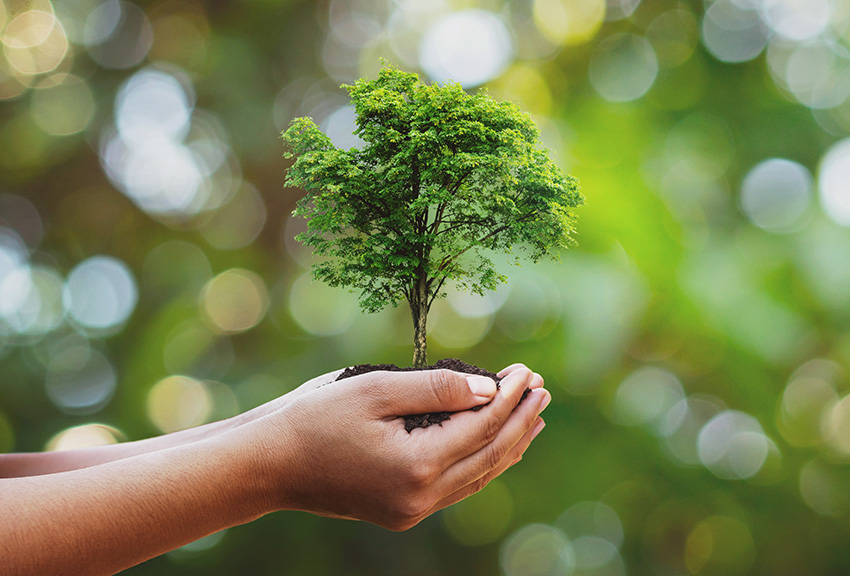Circular Claims Fall Flat? We think there’s more to consider.
April 22, 2020
Here at Hofmann Plastics we know it can be complicated finding a sustainable packaging solution for your business. Between news outlets, NGO’s, and governments, there’s a lot of conflicting information out there, and because of that we want to make ourselves available to be a part of the conversation.
Recently, we discovered a comprehensive report from Greenpeace on the recyclability of plastics. From that report there was a lot that we liked, and certain things that we felt were omitted from the discussion.
In their report they found that plastics are not recycled in America with the exception of PET bottles, and HDPE containers and jugs.
While the Greenpeace report makes some valid points about the current state of recycled plastics, and opportunities for improvement in the collection and recycling of the material, it only presents one side of the story.
The bright side of plastics
Although important, current state recycling rates is one piece to the puzzle. There are a lot of positives to plastics, many of them environmental; and that’s why we try to have a comprehensive perspective.
- Plastics are lighter and safer to handle/transport than most conventional packaging materials
- Plastics help keep products fresher for longer, reducing waste of food and other products that may expire (for example, a packaged cucumber will stay fresh for 20 days vs. 3 days for an unpackaged one)
- Processing plastic packaging creates only a small amount of CO2 emissions [link]
- Plastics require less raw material; a few drops of oil can be used to package a pint of strawberries [link]
- Plastics are a more economical, making your end product more affordable for more people
The cause of plastics pollution
The good news is Greenpeace did mention one possible solution: standardization of a material for each shape. In their report they stated that mono PET or #1 plastic, used to make water and soda pop bottles is fully recyclable. Recyclers can visually identify what type of plastic is used based on the shape, this level of confidence enables recyclers to collect and sort and contribute to PET being such a circular material.
Where the problem lies is where multiple resins can be used for a shape/type of packaging. Recycling logos may be easy for consumers to read, but recycling and collection operations can’t identify small print and need an easier way for identification, this leads to a broken cycle for the material.
When recyclers can’t trust what the packaging is made of — they can’t sort it. If plastics don’t get sorted, they don’t get recycled, and they end up being landfilled, incinerated or exported.
Together we can make all plastic packaging recyclable
At E. Hofmann Plastics we chose to use polypropylene (PP) for our thin-walled rigid plastic packaging because its versatile in applications and maintains recyclability with impurities accounting for less than 5%. One potential solution would be a standardization of what shapes PP can be found in, to help recyclers and collection operations to properly sort PP as it’s inherently recyclable.
Looking to the future, we’re excited about ongoing efforts from companies around the World in chemical recycling to open a whole new world of potential for plastics recycling. Chemical recycling has a much higher tolerance for impurities and produces much more virgin quality food grade resin per pound of input. The bottom line is there is a lot of inherent potential in plastics, and it possess a lot of opportunity to be a circular material with low environmental overhead.
Hofmann is open to continue the conversation with producers, retailers and governments to improve the system. By doing so we can unlock the inherent potential of plastic being a circular material that’s part of our environmental solution.
Archives
- April 22, 2020 - Circular Claims Fall Flat? We think there’s more to consider.
- March 11, 2019 - Our Latest Innovation: Compostable Products
- May 30, 2018 - Hofmann Helps for the Summer!
- May 7, 2018 - Our Latest Innovations
- January 23, 2018 - Our Resolution to Recycle
- December 22, 2017 - Hofmann Helps for the Holidays!
- December 22, 2017 - Happy Holidays!
- December 13, 2017 - Adding to Our Square Pails
- October 30, 2017 - Hofmann Helps!

